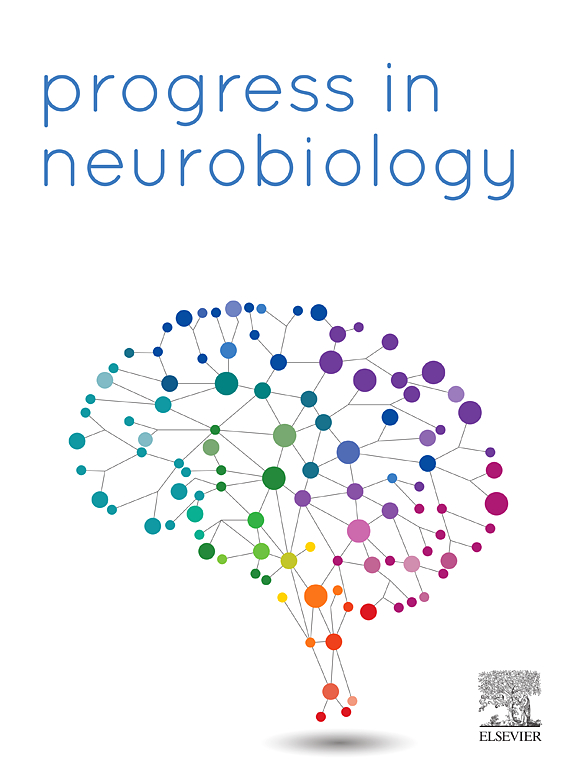功能磁共振成像显示猕猴上丘的侧视位组织。
IF 6.1
2区 医学
Q1 NEUROSCIENCES
引用次数: 0
摘要
上丘(SC)将来自视网膜、皮层下和皮层区域的多感官输入整合到视觉空间地图中,以支持定向和互动行为。虽然早期的模型表明SC主要代表目标检测的外围空间,但最近的证据强调了其重要的中央凹表征,这对于精确定位目标至关重要。利用超高分辨率的相位编码fMRI和空间定位刺激,我们绘制了六只猕猴的SC的视觉定位组织,其偏心度为40°。除了证实先前的发现外,我们还在fMRI信号中发现了一致的半球间不对称。与右侧不同,左侧SC显示出清晰的偏心率图,对从中央凹到周围的偏心率增加的刺激反应具有平滑的正尾侧进展。相反,与左侧SC相比,右侧SC没有明显的偏心图,相反,它表现出更突出的极角图和更宽的空间fMRI对周围刺激的反应。这些侧化反应在刺激类型和成像方案中是一致的,并且仅反映在顶叶内沟(SC的主要皮层输入)中。无论潜在的机制是什么,我们的研究结果表明,非人灵长类动物的功能性侧化可能比之前认识到的更为普遍。本文章由计算机程序翻译,如有差异,请以英文原文为准。
Lateralized visuotopic organization in the macaque superior colliculus revealed by fMRI
The superior colliculus (SC) integrates multisensory inputs from retinal, subcortical, and cortical regions within a map of visual space to support orienting and interactive behaviors. While early models suggested that the SC primarily represents peripheral space for target detection, recent evidence highlights its significant foveal representation, essential for precisely targeting objects. Using ultra-high-resolution phase-encoding fMRI and spatially localized stimuli, we mapped the visuotopic organization of the SC in six macaques up to 40° eccentricity. In addition to confirming previous findings, we identified consistent interhemispheric asymmetries in the fMRI signal. The left SC, unlike the right, displayed a clear eccentricity map with a smooth rostro-caudal progression of responses to stimuli of increasing eccentricity from the fovea to the periphery. Conversely, the right SC showed no evidence of a pronounced eccentricity map and, instead, it exhibited more prominent polar angle maps and spatially broader fMRI responses to peripheral stimuli compared to the left SC. These lateralized responses were consistent across stimulus types and imaging protocols and were mirrored only in the intraparietal sulcus, a major cortical input to the SC. The observed asymmetry may derive from differences in magnification factor, intercollicular or surround inhibition between the left and right SC. Regardless of the underlying mechanism, our results suggest that functional lateralization in nonhuman primates may be more prevalent than previously recognized.
求助全文
通过发布文献求助,成功后即可免费获取论文全文。
去求助
来源期刊

Progress in Neurobiology
医学-神经科学
CiteScore
12.80
自引率
1.50%
发文量
107
审稿时长
33 days
期刊介绍:
Progress in Neurobiology is an international journal that publishes groundbreaking original research, comprehensive review articles and opinion pieces written by leading researchers. The journal welcomes contributions from the broad field of neuroscience that apply neurophysiological, biochemical, pharmacological, molecular biological, anatomical, computational and behavioral analyses to problems of molecular, cellular, developmental, systems, and clinical neuroscience.
 求助内容:
求助内容: 应助结果提醒方式:
应助结果提醒方式:


